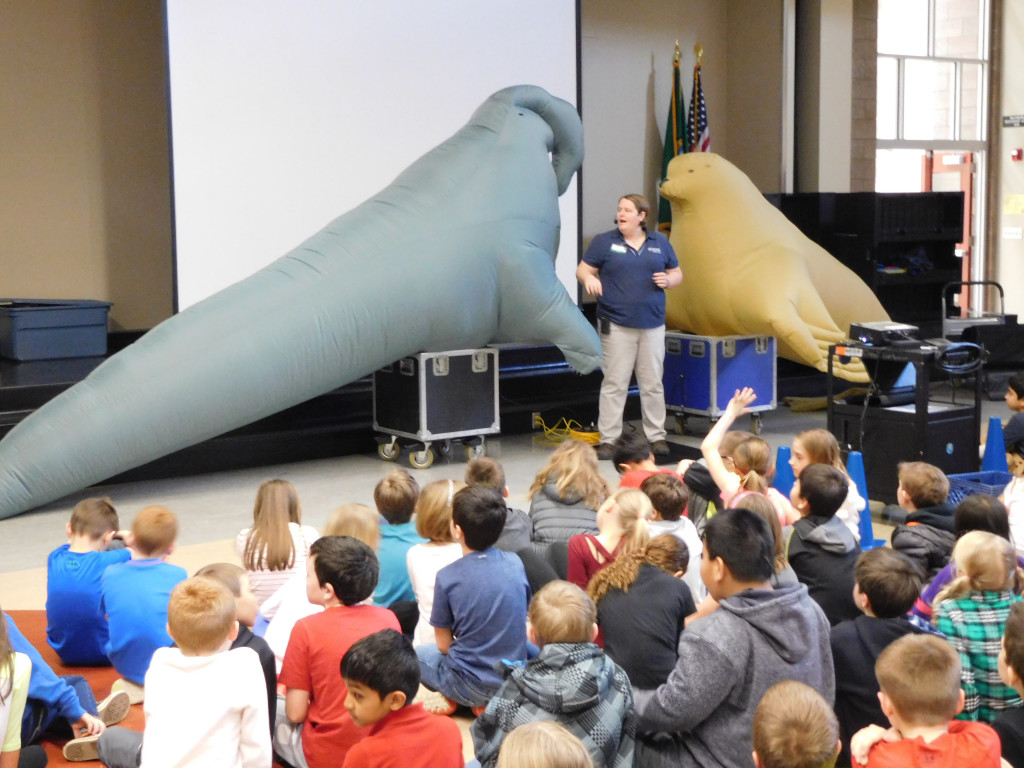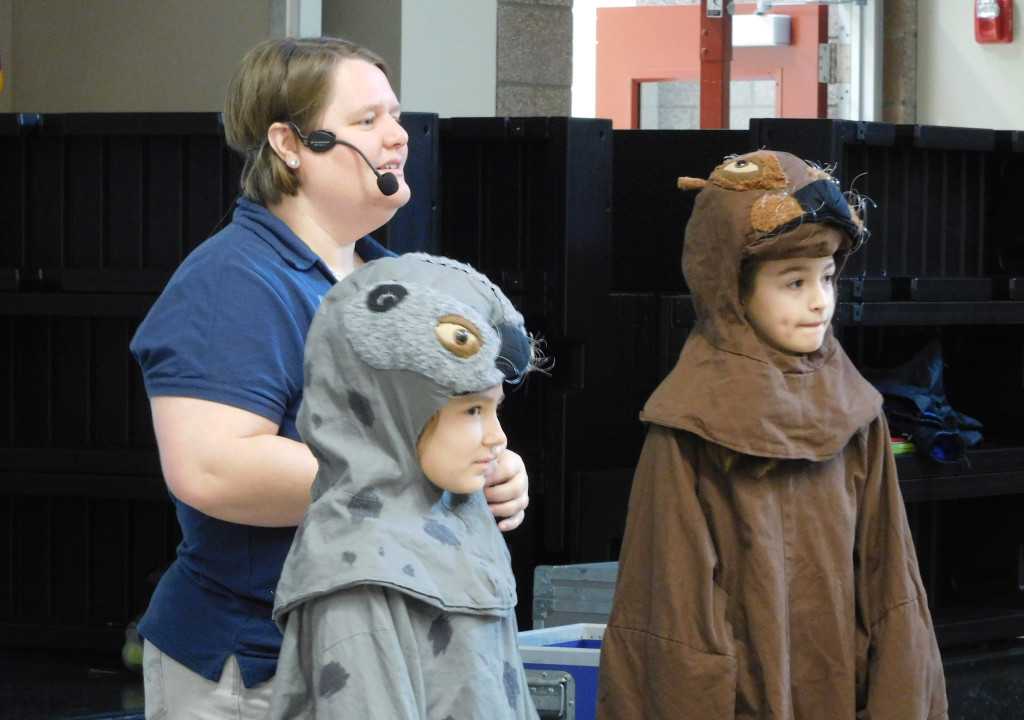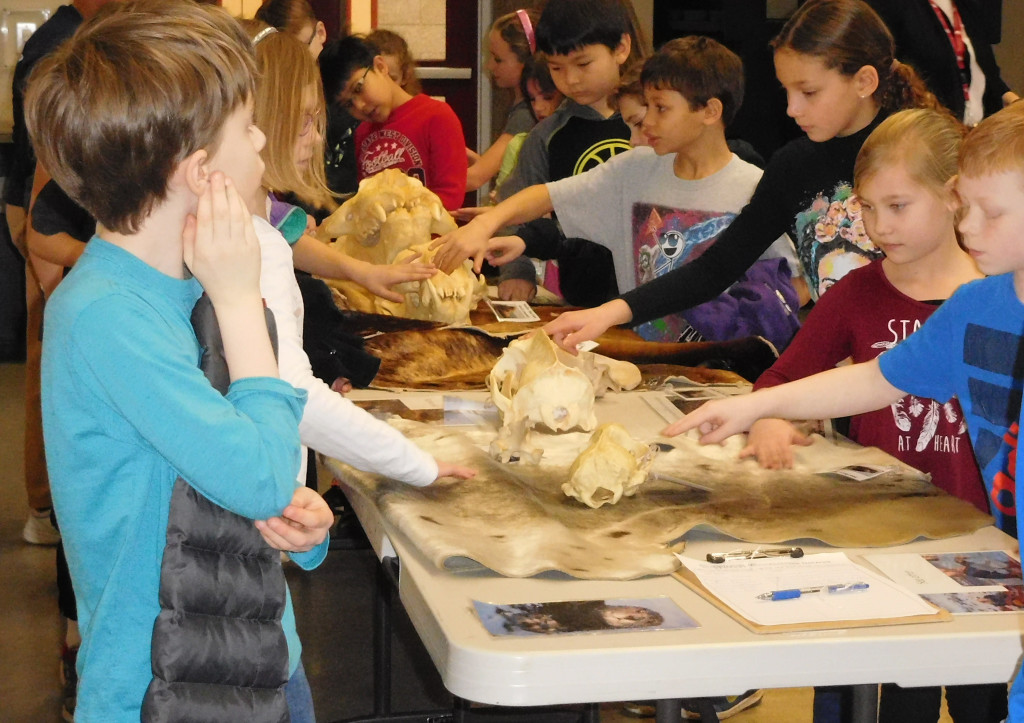Students at Dorothy Fox Elementary School had the opportunity to experience an aquarium without ever leaving their school.
That’s because it was one of the elementary schools in Clark County selected for the Oregon Coast Aquarium’s outreach program. The assembly-style events make coastal and ocean education accessible to kids who may not have an opportunity to explore the Oregon Coast with their families or during field trips.








